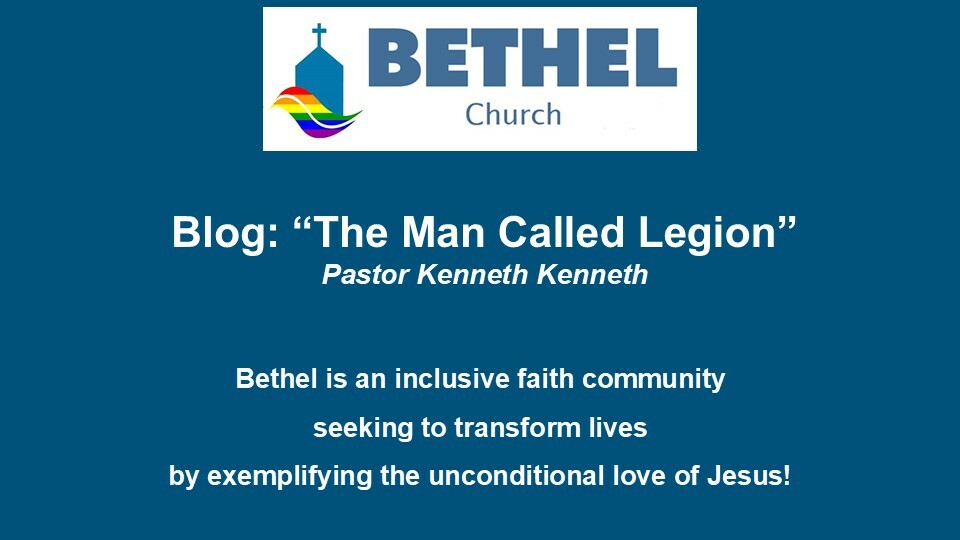The Man Called Legion


In a world that often pushes those who are different to the fringes, there's a powerful story that challenges us to see the divine potential in every person. This tale of transformation, set in ancient Capernaum, offers profound insights into how we view and treat those society deems "unclean" or unworthy.
Picture a synagogue on the Sabbath, a place of worship and learning. Into this sacred space walks a teacher unlike any other, whose words captivate the crowd. But suddenly, the peace is shattered by a man possessed by an "unclean spirit." This isn't just any disturbance – it's a collision of the holy and the profane, right in the heart of religious observance.
The possessed man's condition is heart-wrenching. Driven from his community, he lives among the tombs, engaging in self-harm and crying out in torment. It's a stark reminder that sometimes, the most broken among us are pushed to the margins, out of sight and out of mind. But is this truly a solution, or merely a way to avoid confronting uncomfortable truths?
What's remarkable is how this unclean spirit recognizes the divinity in the teacher. It cries out, "Have you come to destroy us?" This moment highlights a profound truth – that even in our darkest, most troubled states, there's a part of us that can still recognize the divine. It speaks to the unbreakable connection between humanity and its Creator, a concept known as "imago Dei" – the idea that we are all created in God's image.
This concept of imago Dei is crucial. It reminds us that every person, regardless of their current state or struggles, carries within them a spark of the divine. It challenges us to look beyond the surface, beyond the "unclean spirits" that may manifest as hatred, jealousy, greed, or any number of human failings, and see the inherent dignity in each individual.
The teacher's response to the man is revolutionary. Instead of recoiling or banishing him further, he confronts the unclean spirit directly. With authority, he commands it to leave, and the man is freed from his torment. This act of healing isn't just about physical or mental restoration – it's a powerful statement about the nature of divine love and its ability to transform even the most hopeless situations.
What happens next is equally important. The healed man, now "clothed and in his right mind," wants to follow his healer. He's found someone who saw him for who he truly was, who lifted him up instead of pushing him down. It's a beautiful picture of gratitude and the human desire for connection with those who truly see and value us.
But the story takes an unexpected turn. The villagers, upon seeing the transformed man, react not with joy but with fear. They're more disturbed by the healing than they were by the man's previous condition. This reaction forces us to confront an uncomfortable truth: Sometimes, we become more comfortable with brokenness than with restoration. Change, even positive change, can be deeply unsettling when it challenges our established worldview.
This narrative pushes us to examine our own attitudes. How often do we, like the villagers, prefer to keep the "unclean" at arm's length? Do we truly believe in the possibility of transformation, or have we become cynical, thinking some cases are beyond hope?
The story reminds us that God's domain often manifests in ways that run counter to human intuition and institutions. It takes root among the marginalized, the outcasts, those deemed insignificant by worldly standards. This is a radical inversion of how power and influence typically operate in our societies.
As we reflect on this ancient tale, we're challenged to see the world through a different lens. We're called to recognize the divine image in every person we encounter, especially those society pushes to the margins. We're invited to believe in the possibility of transformation, even in the most difficult cases.
Moreover, we're prompted to examine our own lives. What "unclean spirits" might we be harboring? What aspects of ourselves do we try to hide or push away? The story suggests that healing and wholeness are possible, but it often requires confronting these difficult parts of ourselves head-on.
In our daily lives, we have opportunities to be agents of hope and transformation. When we encounter someone struggling, do we, like the villagers, seek to push them away? Or do we, like the teacher, approach with compassion and a belief in their inherent worth?
The call is clear: to see the divine potential in every person, to believe in the possibility of transformation, and to be willing to confront the "unclean spirits" in our own lives and communities. It's a challenging message, but one that offers hope – hope for healing, hope for restoration, and hope for a world where no one is deemed beyond redemption.